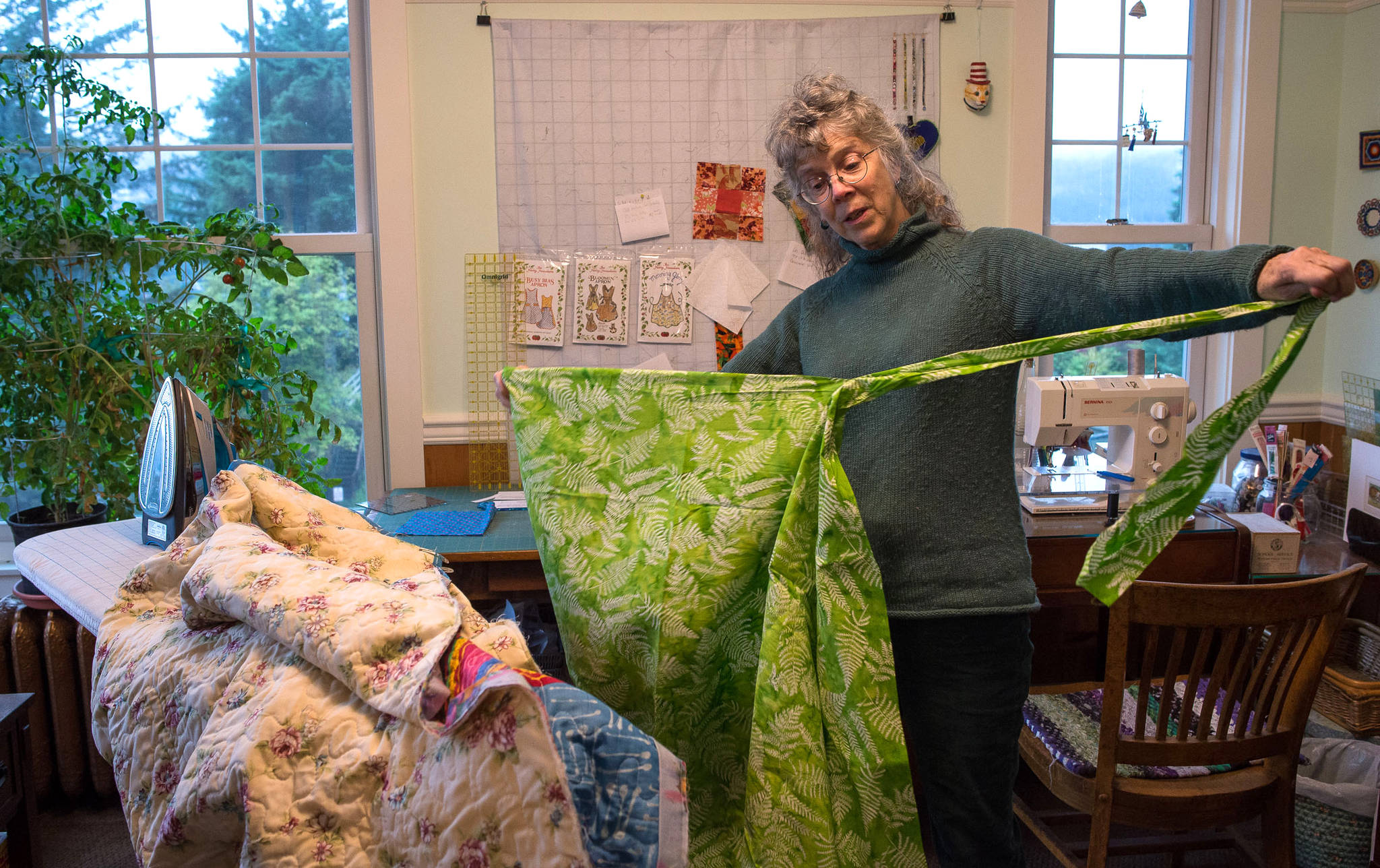On a frigid March night soon after the closure of the Bergmann Hotel displaced people onto the streets of Juneau, Odette Edgar saw something that disturbed her.
A man was huddled in the parking garage underneath the Capitol Building, trying to stay out of the cold. She didn’t feel safe stopping by on her own and was frustrated as she tried to think of a way to help him.
“Out of that frustration stirring around in my mind,” Edgar said, “it occurred to me that the thing that I can do and love to do is make quilts.”
Edgar, a longtime quilter, was struck with an idea. The quilting community in town has long made quilts and pillow cases for foster children, for the Aiding Women in Abuse and Rape Emergencies (AWARE) shelter and charity organizations.
She had heard of Housing First, an upcoming 32-unit facility designed to house Juneau’s most vulnerable homeless individuals. She could rally fellow quilters to make quilts for these residents and make them feel more at home.
Starting April 1, she helped coordinate groups such as the Gold Street Quilters and the Monday Night Sewing Circle. They have now produced a couple dozen quilts. They delivered the first eight of the quilts last week, just before the first eight residents were scheduled to move in.
“It’s been fun to get the idea going,” Edgar said. “It’s been a really amazing experience of people stepping forward and wanting to help, either because they love to quilt or because they’re supporting this project specifically.”
The quilts are all personalized to an extent. Each one carries the name of the resident to whom it goes, and it includes the names of the people who made it. The quilters worked with Housing First staff to learn whether the recipient of the quilt is male or female, and chose fabric based on that.
Mariya Lovishchuk, the executive director of the Glory Hole shelter and one of the driving forces behind the construction of Housing First, went out of her way to point out the quilts as she gave media members a tour of the facility. Beaming, she pointed to one of the quilts, which was already on one of the beds.
“These are amazing,” Lovishchuk said. “These quilts were made by a lot of people … every unit gets a quilt, and then every quilt says exactly who it’s for, with their name. They’re all pretty awesome.”
Getting the program off the ground took a little creativity and a great deal of coordination, Edgar said.
The first problem she faced was that quilts, even done as a group, take a long time to make. She estimated it would take two or three years to make enough quilts to have on one every bed at Housing First.
Her friend Judy Regan, who runs the Gold Street Quilters group in town, had a solution.
Normally, quilters take rotary cutters and cut fabric bit by bit. Regan proposed taking large pieces of fabric and ripping them into strips. As she stood in her living room, Edgar demonstrated that it only takes a few moments to rip a neat strip of fabric about two yards long and have it ready to put on a quilt.
“Instead of a quilt taking weeks to make,” Edgar explained, “a group of about five of us could make one of these quilts in about two hours.”
They finished their first quilt just a few days after Edgar initially reached out to Regan, and the project took off from there. Regan and fellow quilter Eileen Hosey made 16 quilts between the two of them, taking their work home with them. Most of the other quilts have come from quilting get-togethers, Edgar said.
Word quickly spread of the endeavor, and the community immediately supplied the quilters. It cost about $2,000 for a large machine to quilt the patterns together, and donations from numerous individuals helped cover that. The bulk of it, Edgar said, was covered by a $1,000 donation from Eagles Wings Community Fellowship.
Nine different people and businesses in town donated fabric as well, including local stitching shop Changing Tides.
Edgar said that thanks to these donations and the support from the community, the program can continue producing quilts into the future. Ideally, Edgar said, residents of Housing First would take their quilts with them if and when they end up leaving the facility. She called the quilts “gifts of hope,” saying she pictures the residents going and starting a new life after Housing First, with their quilt with them.
After individuals from this first wave of people move out of Housing First, Edgar and her co-quilters plan to keep producing quilts for future residents.
“We have enough fabric for another 15 quilts, with what people have donated,” Edgar said. “We’ll keep this going.”
• Contact reporter Alex McCarthy at 523-2271 or alex.mccarthy@juneauempire.com.

